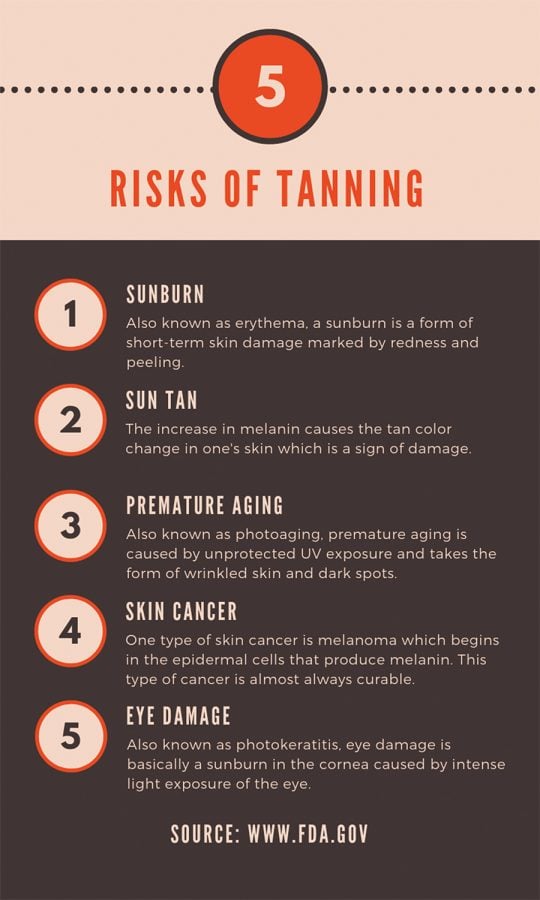Helpful, healthy tips about UV sun rays
Everyone is eager to get one last tan in the sun as the summer is coming to a quick end. However, there are many dangers associated with tanning both indoors and outdoors. Teens and young adults, especially between the ages of 16 and 24, are most vulnerable to contracting skin cancer from intense UV radiation.
Tanning may seem like an alternative to achieve a “healthy glow,” but this solution poses serious health risks. The two types of ultraviolet rays that penetrate the skin are UVA rays and UVB rays. UVB rays are strongly correlated to skin cancers and sunburns.
These rays target the superficial layer of the skin, also called the epidermis layer. On the other hand, the UVA rays accounts for 95% of the sun’s rays that reach the earth and penetrates the second layer of the skin, the dermis. UVA rays can cause wrinkles and premature skin aging.
“My cousin said that tanning for a long time could affect the skin from all the radiation,” said junior Laura Quiceno.
The effect of tanning, and specifically tanning in salons, are so significant that the U.S. Food and Drug Administration has categorized these devices into the highest level of cancer risk: “carcinogenic to humans.” The three most common skin cancers are basal cell carcinoma, squamous cell carcinoma and malignant melanoma.
“I believe they’re not safe because they could cause (malignant) melanoma,” said Guilford Guide, Curtis Arena.
Over the past year, there have been more cases of skin cancer in the U.S. than any other cancer, as shown by a study from WHO, the World Health Organization. Although basal and squamous cell carcinoma have a survival rate upwards of 85 percent, malignant melanoma is one of the most dangerous cancers to humans, with a survival rate of five percent.
Tanning salons can cause these cancers by altering the DNA and causing unmonitored tissue development that eventually forms a malignant tumor. Melanomas are the most dangerous because they originate from the pigment-producing melanocytes in the basal layer of the epidermis.
Although malignant melanoma can be cured if diagnosed early, it can metastasize or spread to other parts of the body if it is diagnosed late. It then becomes difficult to treat, and possibly fatal. The treatment for skin cancers primarily consist of chemotherapy, radiation and surgery.
“Skin cancer runs in (my friend’s) family, and she started to become very wary about (tanning),” said senior McKinley Keener.
In addition to skin cancers, tanning can also cause immune suppression due to the UV-B rays, which diminish the skin’s proper immune-regulating functionalities and leaves the body vulnerable to diseases. Another common effect of tanning is eye damage from UV-A and UV-B rays, as well as allergic reactions that can result in rashes and other adverse effects.
Although there are treatments for these diseases, a more beneficial alternative, as stated by the NIH and WHO, is prevention by avoiding excessive UV rays and tanning salons. Sunblock can protect against UV-B rays while sunscreen protects against UV-A rays. One option is to use broad-spectrum protection sunscreen that protects against both kinds of rays. With adequate sunscreen and protective clothing, people can safely enjoy outdoor activities without the fear of damage to their skin later.









